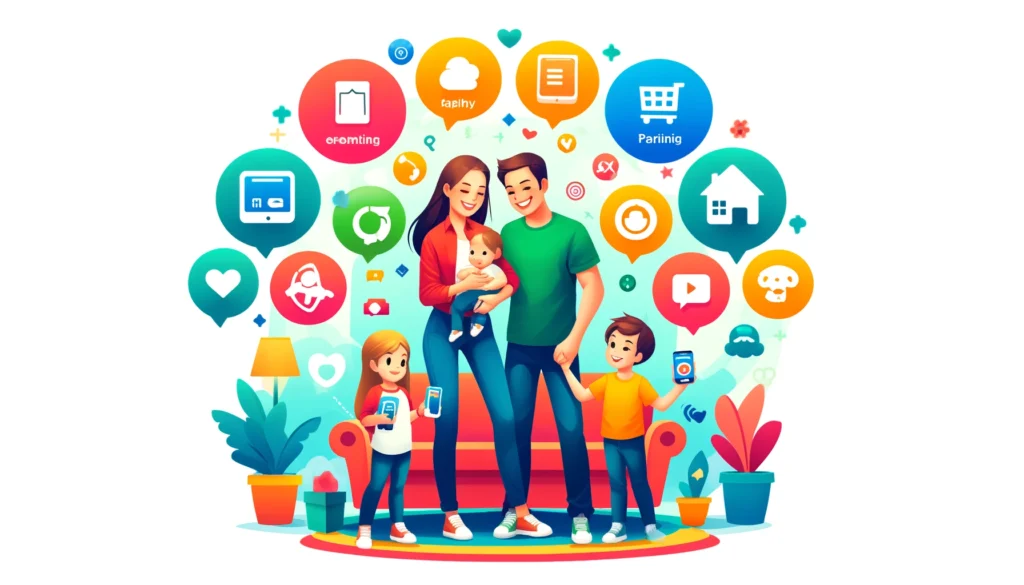In an increasingly interconnected world, the ability to communicate in multiple languages has become a valuable skill. Language learning is not just about expanding your horizons; it’s a passport to international experiences, career opportunities, and cultural enrichment. With the rise of language learning apps, mastering a new language has never been more accessible or engaging. In this article, we’ll delve deeper into how these apps are changing the landscape of language education, explore their unique features, and examine how they can help you achieve fluency.
The Traditional Challenges of Language Learning
Traditionally, learning a new language often involved enrolling in classes, purchasing textbooks, and attending language schools. While these methods have their merits, they come with some challenges:
- Time Constraints: Language classes often require a significant time commitment, making it difficult for individuals with busy schedules.
- High Costs: Language courses, textbooks, and tutoring can be expensive, particularly for languages with limited resources available.
- Limited Flexibility: Traditional language education may not cater to individual learning styles and paces, leaving some learners frustrated or disengaged.
The Advent of Language Learning Apps
Language learning apps have revolutionized the way we acquire new languages by addressing these challenges. Here’s how they’re transforming language education:
- Accessibility: Language learning apps provide immediate access to a wide range of languages, from the commonly spoken to the more niche. This accessibility enables learners to choose the language they are most passionate about or that aligns with their goals.
- Convenience: These apps allow users to learn at their own pace, fitting lessons into their daily routines. Whether you have 15 minutes on your daily commute or an hour before bedtime, you can study whenever and wherever it suits you.
- Interactive Learning: Language learning apps incorporate interactive features such as quizzes, games, and exercises that make learning engaging and enjoyable. They often use gamification to incentivize progress, turning language acquisition into a fun challenge.
- Personalized Learning: Many apps use algorithms and artificial intelligence to tailor lessons to individual learning styles and progress. This personalized approach ensures that users receive the right level of difficulty and reinforcement.
- Real-Life Practice: Language apps often include features like pronunciation practice, conversation simulations, and cultural insights. These elements help users gain practical language skills and cultural understanding.
- Community and Support: Some language learning apps foster a sense of community by allowing users to interact with native speakers, join language forums, or access live tutoring. This support system enhances the learning experience.
- Cost-Effective: While many language learning apps offer free versions, even premium subscriptions are usually more cost-effective than traditional language courses and materials.
Maximizing Your Language Learning Experience
To make the most of language learning apps and achieve fluency, consider these tips:
- Set Clear Goals: Define your language learning objectives. Whether it’s for travel, work, or personal enrichment, having clear goals will keep you motivated.
- Consistency is Key: Dedicate regular time to language learning, even if it’s just a few minutes each day. Consistency is more effective than occasional intense study sessions.
- Practice Listening and Speaking: Language apps often focus on reading and writing. Complement this by actively listening and speaking the language. Try watching foreign films, listening to podcasts, or conversing with native speakers.
- Use Multiple Resources: Combine language apps with other resources like books, language exchange partners, and language courses to diversify your learning experience.
- Track Your Progress: Most language apps offer progress tracking features. Use these to see how far you’ve come and celebrate your achievements along the way.
In-Depth Look at Popular Language Learning Apps
A wide range of language learning apps cater to different skill levels and learning preferences. Here’s a closer look at some of the most popular ones:
Duolingo
Platform: iOS, Android, Web
Overview: Duolingo is one of the most popular language learning apps globally, known for its gamified approach to language acquisition.
Features:
- Gamification: Duolingo uses a game-like interface with points, levels, and streaks to keep learners motivated. Lessons are structured as small, bite-sized challenges that gradually increase in difficulty.
- Variety of Languages: Offers a wide range of languages, including some less commonly taught ones like Welsh and Hawaiian.
- Interactive Exercises: Includes exercises for speaking, listening, reading, and writing. The app uses voice recognition technology to help improve pronunciation.
- Community Engagement: Duolingo forums allow users to interact, share tips, and discuss language learning experiences.
Pros:
- Engaging and fun
- Free with optional in-app purchases
- Suitable for beginners
Cons:
- Limited advanced content
- Ads in the free version
Rosetta Stone
Platform: iOS, Android, Web
Overview: Rosetta Stone is a well-established name in language learning, known for its immersive approach that emphasizes learning through context.
Features:
- Immersive Method: Uses pictures, audio, and text to teach new words and phrases without translation, mimicking the natural language learning process.
- Speech Recognition: TruAccent technology helps learners perfect their pronunciation by comparing it to native speakers.
- Dynamic Immersion: Lessons are designed to fully engage learners in their target language, focusing on speaking and listening skills.
- Offline Mode: Allows users to download lessons and practice without an internet connection.
Pros:
- Effective for developing speaking and listening skills
- High-quality content
- Available in multiple languages
Cons:
- Higher cost compared to other apps
- Less focus on grammar explanations
Babbel
Platform: iOS, Android, Web
Overview: Babbel offers structured lessons designed by language experts, focusing on real-life conversations.
Features:
- Structured Courses: Lessons are designed to be short and easily digestible, covering a wide range of topics from travel to business.
- Speech Recognition: Helps users improve their pronunciation and speaking skills.
- Grammar and Vocabulary: Each lesson integrates grammar explanations and vocabulary practice to build a strong foundation.
- Review Manager: Personalized review sessions ensure that learners retain what they’ve studied.
Pros:
- High-quality content
- Real-life conversational focus
- Detailed grammar explanations
Cons:
- Subscription-based
- Limited free content
Memrise
Platform: iOS, Android, Web
Overview: Memrise combines spaced repetition with engaging content to help learners retain new vocabulary effectively.
Features:
- Spaced Repetition: Uses algorithms to present vocabulary at optimal intervals to enhance retention.
- Real-Life Videos: Features videos of native speakers using the language in context, helping learners understand natural speech.
- Community Courses: Offers user-generated courses in addition to official content, providing a wide variety of learning materials.
- Interactive Games: Includes games and quizzes to reinforce learning through fun activities.
Pros:
- Effective vocabulary retention
- Engaging content
- Free and premium versions available
Cons:
- Less focus on grammar
- Some user-generated content may vary in quality

Drops
Platform: iOS, Android
Overview: Drops focuses on vocabulary building through visual associations and quick, engaging sessions.
Features:
- Visual Learning: Uses illustrations to help learners associate words with images, enhancing memory retention.
- Short Sessions: Designed for quick, five-minute learning bursts, making it easy to fit into a busy schedule.
- Wide Range of Languages: Offers vocabulary in over 40 languages, including less commonly taught ones like Icelandic and Maori.
- Gamified Experience: Incorporates game elements to make learning fun and motivating.
Pros:
- Visually appealing
- Great for building vocabulary
- Quick and easy to use
Cons:
- Limited grammar and conversation practice
- Requires premium subscription for extended use
Tandem
Platform: iOS, Android
Overview: Tandem connects learners with native speakers for language exchange, providing a practical way to practice speaking and listening skills.
Features:
- Language Exchange: Pairs users with native speakers for real-time conversations via text, voice, or video.
- Community: Users can join language groups and participate in discussions, fostering a sense of community.
- Tutors: Offers professional tutoring services for those seeking more structured lessons.
- Learning Resources: Includes translation tools, correction features, and personalized learning plans.
Pros:
- Real-life practice with native speakers
- Free with optional premium features
- Encourages cultural exchange
Cons:
- Dependent on finding a suitable language partner
- Some features require a premium subscription
HelloTalk
Platform: iOS, Android
Overview: Similar to Tandem, HelloTalk connects language learners with native speakers for practice and cultural exchange.
Features:
- Text, Voice, and Video Chat: Allows users to communicate with native speakers using various methods, including voice messages and video calls.
- Learning Tools: Includes translation, pronunciation correction, and grammar tips to assist during conversations.
- Moments: A social media-like feature where users can share updates and practice writing in their target language.
- Language Exchange: Matches users with language partners for mutual learning benefits.
Pros:
- Interactive and immersive
- Encourages real-life language use
- Free with optional premium features
Cons:
- Quality of partners can vary
- Some advanced features require payment
italki
Platform: iOS, Android, Web
Overview: italki offers one-on-one lessons with professional teachers, making it ideal for personalized learning and getting specific feedback.
Features:
- Professional Tutors: Access to thousands of qualified teachers and community tutors for personalized lessons.
- **Flexible Scheduling
:** Users can book lessons that fit their schedules, with options for short or long-term learning plans.
- Customizable Lessons: Teachers tailor lessons to meet individual goals, focusing on areas like conversation, grammar, or exam preparation.
- Community Features: Includes forums, language challenges, and articles for additional learning support.
Pros:
- Highly personalized learning experience
- Flexible and convenient
- Suitable for all proficiency levels
Cons:
- Can be more expensive than other apps
- Quality of tutors can vary
FluentU
Platform: iOS, Android, Web
Overview: FluentU uses real-world videos, like music videos and news clips, to teach languages, helping users understand how the language is used in different contexts.
Features:
- Authentic Content: Videos from various genres provide exposure to the language as it’s naturally spoken.
- Interactive Subtitles: Includes clickable subtitles that offer translations and definitions, aiding comprehension.
- Personalized Quizzes: After watching videos, users can take quizzes that reinforce vocabulary and grammar from the content.
- Adaptive Learning: Lessons adapt to the learner’s progress, ensuring a challenging yet manageable learning experience.
Pros:
- Engaging and context-rich
- Helps with listening comprehension
- Customizable learning experience
Cons:
- Subscription-based
- Limited speaking practice
Pimsleur
Platform: iOS, Android, Web
Overview: Pimsleur focuses on auditory learning and conversational skills, making it ideal for those who want to improve their speaking ability.
Features:
- Audio-Based Lessons: Emphasizes listening and speaking through 30-minute audio lessons designed to be used daily.
- Graduated Interval Recall: Uses a scientifically-proven method to help learners retain and recall information effectively.
- Hands-Free Learning: Allows users to learn on the go without needing to look at a screen.
- Cultural Insights: Lessons include cultural context to enhance understanding and appreciation of the language.
Pros:
- Effective for developing speaking and listening skills
- Convenient for busy schedules
- Strong focus on pronunciation
Cons:
- Limited reading and writing practice
- Higher cost compared to some other apps
Busuu
Platform: iOS, Android, Web
Overview: Busuu combines language courses with social features, allowing users to practice with native speakers and receive feedback on their exercises.
Features:
- Structured Courses: Offers comprehensive courses that cover grammar, vocabulary, and conversational skills.
- Community Feedback: Users can submit written or spoken exercises for feedback from native speakers.
- AI-Powered Reviews: Personalized review sessions help reinforce learning and ensure retention.
- Offline Mode: Allows users to download lessons and practice without an internet connection.
Pros:
- High-quality content
- Community interaction and feedback
- Suitable for beginners to advanced learners
Cons:
- Subscription-based
- Some advanced features require payment

Conclusion
Language learning apps have democratized language education, making it accessible to individuals of all backgrounds and circumstances. They provide an engaging and flexible way to embark on a journey to fluency, enabling you to unlock new opportunities and connect with people and cultures around the world. By exploring the unique features and strengths of various apps, you can find the one that best suits your learning style and goals. So, whether you’re dreaming of exploring foreign lands, advancing your career, or simply expanding your horizons, these apps can be your passport to fluency and a richer, more interconnected life.


